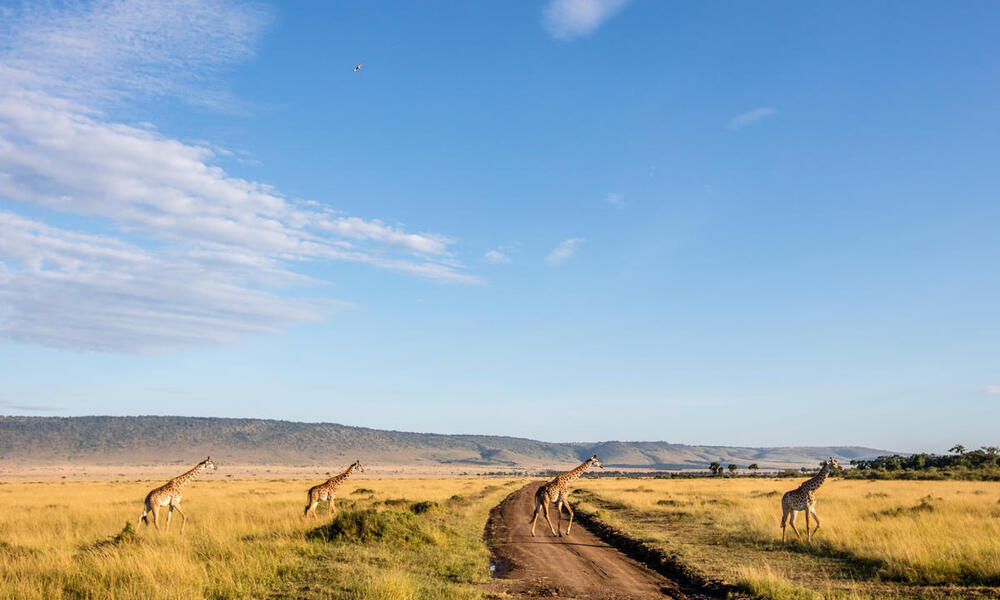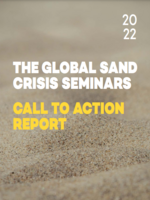Infrastructure development is both a global need and a global problem and, as such, demands global action. The most powerful way we can bring about transnational, systemic change is to influence global policies and practices and create a robust market for sustainable infrastructure.
WWF is generating a movement for change across infrastructure-related disciplines. We advocate for the recognition of the true social and environmental costs of traditional infrastructure and the clear value to people and the planet of sustainable infrastructure.
WWF brings leading science and interdisciplinary expertise and coordinates between a variety of sector stakeholders—including infrastructure planners, developers, and investors. Together, we create and share best practices and guidance related to innovative financing mechanisms, promote and apply infrastructure standards, and advance the use of technology and data to support the design and management of sustainable infrastructure.
For instance, WWF-US has a strategic partnership with the International Federation of Consulting Engineers (FIDIC)—the largest and most influential member association for the engineering industry—to promote sustainability in the sector. WWF engages with the infrastructure finance community—investors, asset owners, and managers—to support portfolio risk analysis and investment in sustainable infrastructure that helps people and nature. We are also a member of the Infrastructure and Nature Coalition, a group of more than 25 organizations collaborating to provide resources and guidance on how the sector can deliver new and necessary infrastructure while restoring biodiversity, building resilience, and creating a just and carbon-neutral future.
WWF focuses on effecting change at the national and local levels to transform how countries deliver infrastructure services so that a holistic, sustainable approach becomes the rule and not the exception.
We collaborate with national and local governments, communities, developers, engineers, investors, and other stakeholders to transform the way countries plan and deliver infrastructure that supports healthy ecosystems, governance, and livelihoods. Working together, we use country-based sustainable solutions to change the way decision-makers plan, design, procure, and finance infrastructure in our priority areas and key landscapes, seascapes, and river basins.
For example, WWF works with the government of Nepal to detail processes and standards for the construction of wildlife-friendly linear infrastructure (e.g., roads, railways, canals, and power lines) and to strengthen early actions to integrate infrastructure construction with wildlife and biodiversity conservation. In the Greater Mekong, WWF works with partners to support sustainable energy planning that promotes clean and renewable energy alternatives, contributing to energy goals without damming the area's remaining long free-flowing rivers.
Additionally, rebuilding infrastructure, water supply systems, and shelter following extreme events can cause a sudden demand for building materials and an over-extraction of natural resources. We work with disaster response agencies, including the United Nations, to make environmental issues a pillar of disaster recovery strategies by leading research and advisory support on shelter and environmental assessments, responsible building materials, land-use planning, footprint reduction, and resilience.
With our partners, we can help steer future infrastructure development in the direction of sustainability, but it can take time to see results from these long-term processes. What actions can we take that will result in more immediate benefits?
Where damaging infrastructure development is imminent or already underway, we can take steps to prevent or stop it and advocate for alternatives. Every threat will demand a unique approach, and we need to craft proactive solutions. WWF is building capacity with national and local institutions, civil society, and academia through tools, guidance, and training programs on sustainable infrastructure. Our rapid-response success relies on listening to local communities and facilitating seamless collaboration and communication with local partners.


 Kate Newman
Vice President, Sustainable Infrastructure and Public Sector Initiatives
Kate Newman
Vice President, Sustainable Infrastructure and Public Sector Initiatives
 Evan Freund
Senior Director, Infrastructure and Large Initiatives, Freshwater
Evan Freund
Senior Director, Infrastructure and Large Initiatives, Freshwater
 Ryan Bartlett
Director, Climate Risk Management & Resilience
Ryan Bartlett
Director, Climate Risk Management & Resilience
 Anita van Breda
Senior Director, Environment and Disaster Management
Anita van Breda
Senior Director, Environment and Disaster Management
 Nilanga Jayasinghe
Manager, Asian Species, Wildlife Conservation
Nilanga Jayasinghe
Manager, Asian Species, Wildlife Conservation
 Michele Thieme
Deputy Director, Freshwater
Michele Thieme
Deputy Director, Freshwater
 Jeff Opperman
Global Freshwater Lead Scientist, Global Science
Jeff Opperman
Global Freshwater Lead Scientist, Global Science
 Missaka Hettiarachchi
Senior Fellow, Environment and Disaster Management Program
Missaka Hettiarachchi
Senior Fellow, Environment and Disaster Management Program